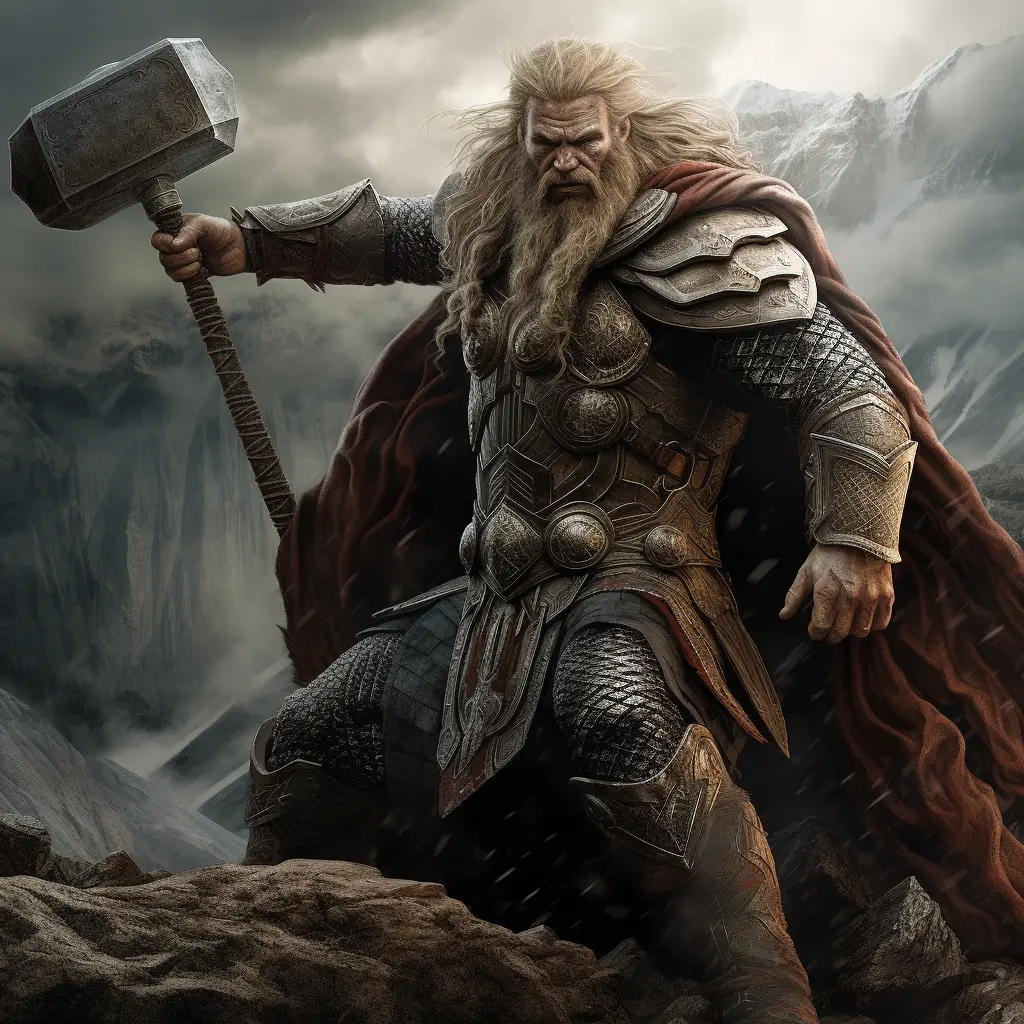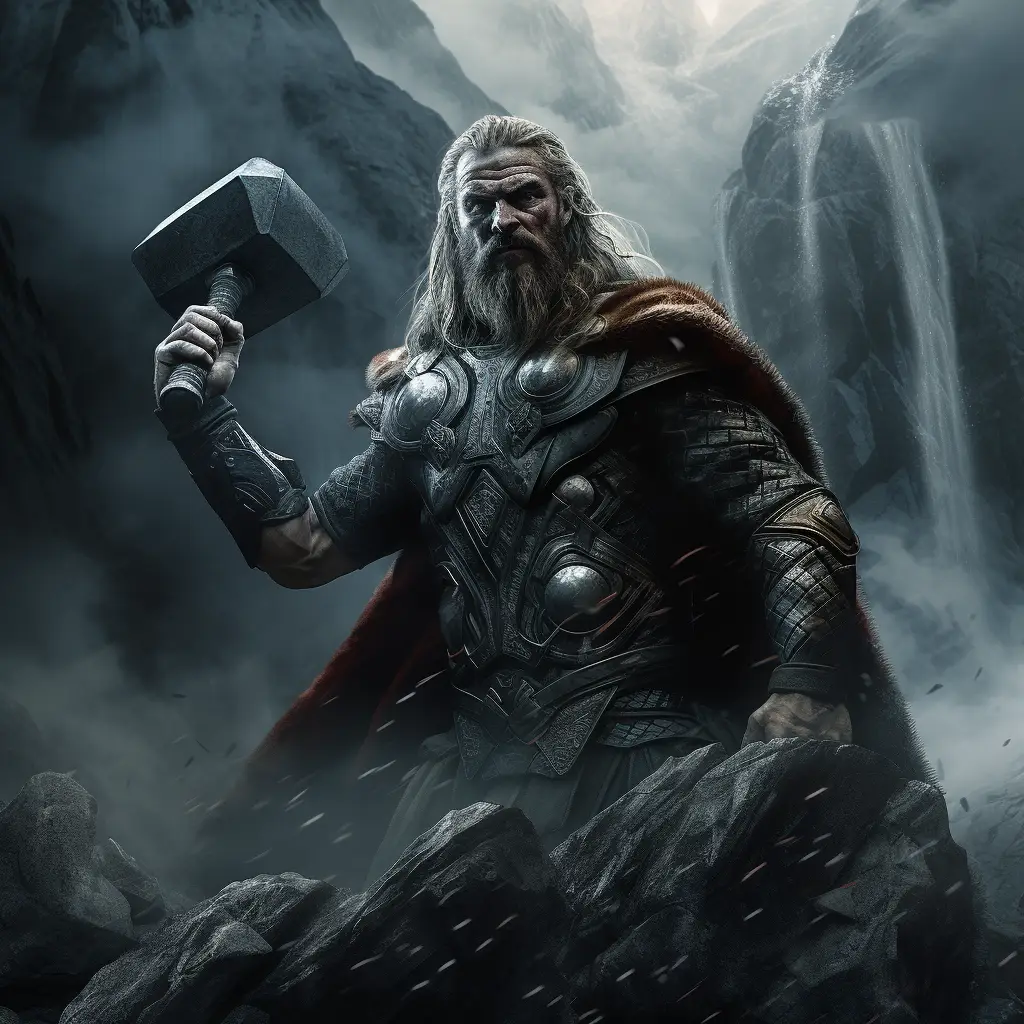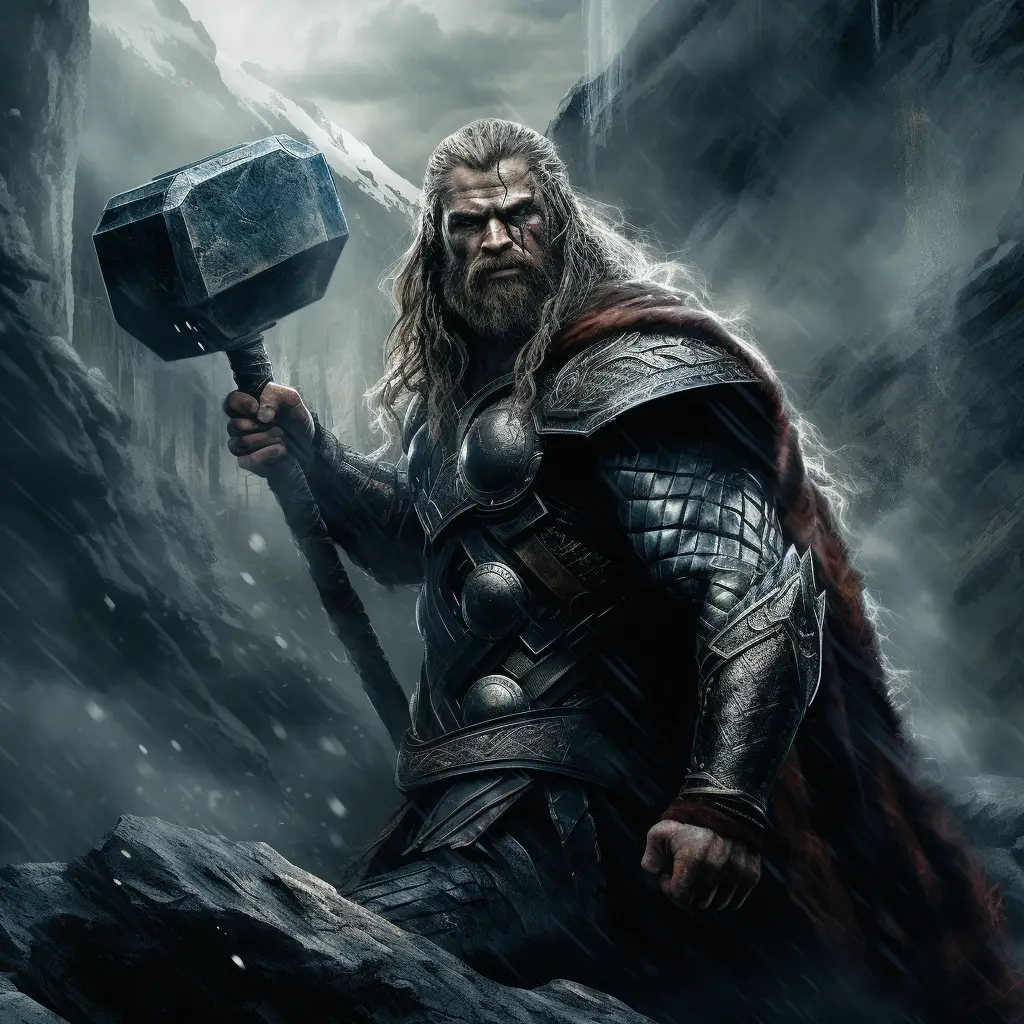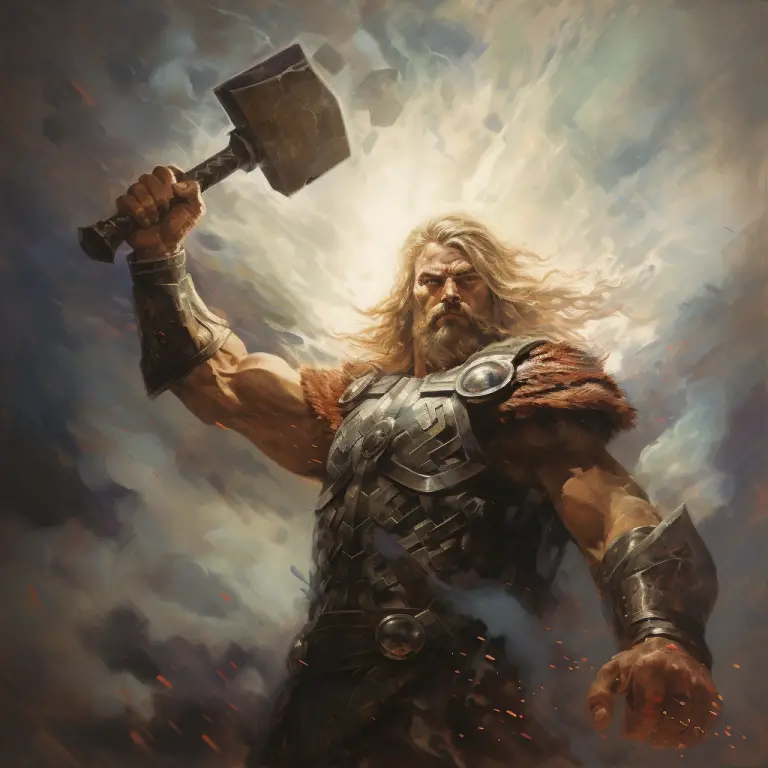Thor is a prominent deity in Norse mythology, often depicted as the god of thunder, lightning, storms, oak trees, strength, the protection of mankind, and fertility. He is commonly depicted as a powerful, hammer-wielding figure with red hair and a beard. Thor was highly revered by the ancient Norse people and was considered one of the principal gods alongside Odin and Freyja.
In Norse mythology, Thor is known for wielding the magical hammer Mjölnir, which he uses to defend Asgard, the realm of the gods, and Midgard, the realm of humans, from various threats, including giants and monsters. He is often portrayed as a fierce warrior who fearlessly confronts his enemies, but he also has a more protective and nurturing side, as he is seen as a guardian of humanity and a promoter of fertility.
Thor’s adventures and exploits are recounted in various Old Norse texts, including the Poetic Edda and the Prose Edda, as well as in later medieval Icelandic sagas. He remains a popular figure in modern culture, often depicted in literature, art, and popular media.
Thor is married to Sif, a goddess associated with fertility, family, and the harvest. Sif is often depicted as having long, golden hair, which is said to represent fields of wheat or other grains. The marriage of Thor and Sif is described in various Old Norse texts, including the Prose Edda and the Poetic Edda.
Together, Thor and Sif have a son named Þrúðr (sometimes anglicized as Thrud or Thrudr), whose name means “strength” or “power” in Old Norse. While Sif is not as prominently featured in Norse mythology as some other goddesses, her marriage to Thor is significant, as it reflects themes of fertility, family, and the domestic sphere within Norse cosmology.
Thor is renowned in Norse mythology for his numerous exploits and adventures, many of which involve battling giants, monsters, and other mythical beings. Some of Thor’s famous exploits include:
Defeating the Giants: Thor is often depicted as the protector of both gods and humans against the giants (Jotnar), who are their eternal enemies. He engages in numerous battles against these giants, including his ongoing conflict with the giant Thrym, who steals his hammer, Mjölnir, leading Thor on a quest to retrieve it.
Mjölnir: Thor’s most famous weapon is his hammer, Mjölnir, which is imbued with powerful magical properties. Among its abilities, Mjölnir can control thunder and lightning, return to Thor when thrown, and create powerful shockwaves upon impact. Thor’s exploits often involve him wielding Mjölnir to defeat enemies and protect both gods and humans.
Battles with Monsters: Thor confronts various monstrous beings in Norse mythology, including the Midgard Serpent (Jormungandr) and the giant wolf Fenrir. These battles are often depicted as cataclysmic events that threaten the stability of the cosmos.
Travels to Utgard-Loki’s Castle: In one famous story, Thor and his companions Loki and Thjalfi journey to the castle of Utgard-Loki, a powerful giant. There, they face a series of challenges and contests designed to test their strength and cunning. Despite their efforts, they are ultimately outwitted by Utgard-Loki’s illusions, demonstrating the deceptive nature of appearances.
Hunting and Fishing: Thor is also known for his prowess in hunting and fishing. In one story, he disguises himself as a young boy and accompanies a group of giants on a fishing expedition. Thor’s enormous strength allows him to reel in the Midgard Serpent, but the giants, fearing the consequences, cut the line before the serpent can be brought ashore.
These are just a few examples of Thor’s many exploits and adventures in Norse mythology. His bravery, strength, and determination make him one of the most beloved and iconic figures in Norse lore.





